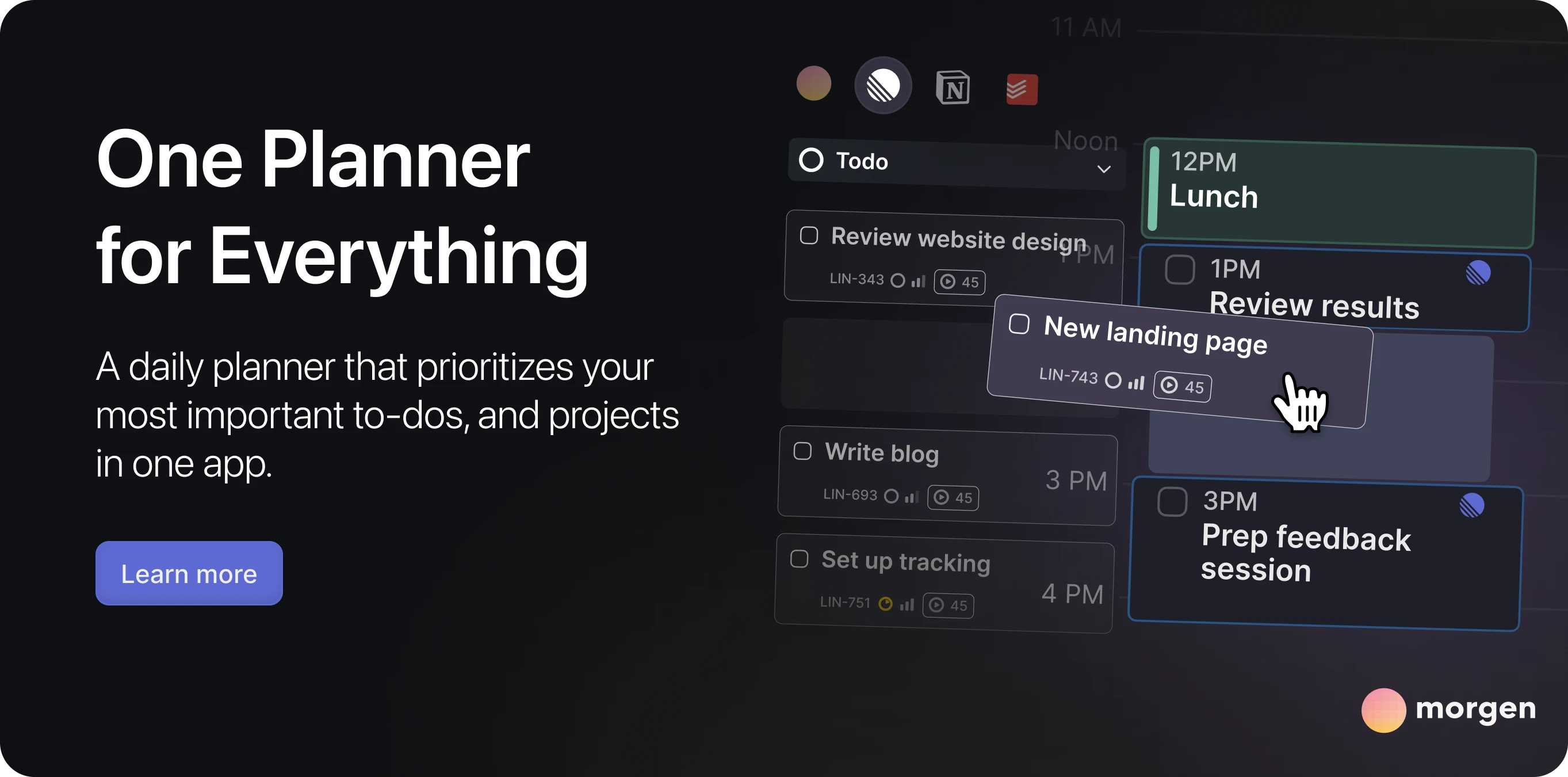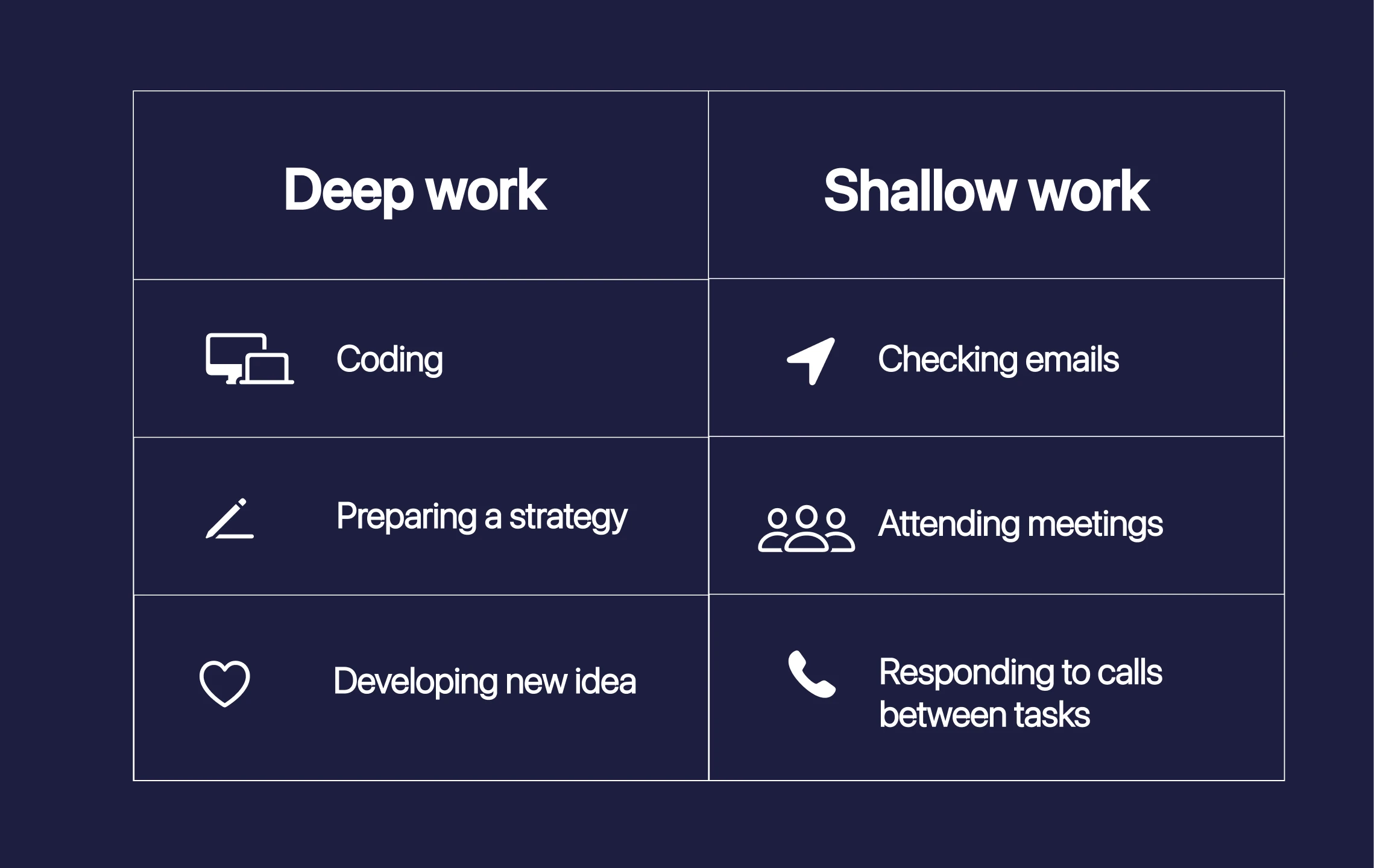| Akiflow | Motion |
|---|---|
| 📌 Unified inbox (email / chat / tasks) | 📌 AI calendar auto-scheduling (around meetings) |
| 📌 Lightning-fast command bar | 📌 Auto-rebook unfinished tasks |
| 📌 Precise time slots you place yourself | 📌 Capacity-aware prioritization |
| 📌 Natural-language capture | 📌 Dependency-aware timelines |
| 📌 App integrations | 📌 Workload balancing and risk alerts |
Akiflow vs Motion
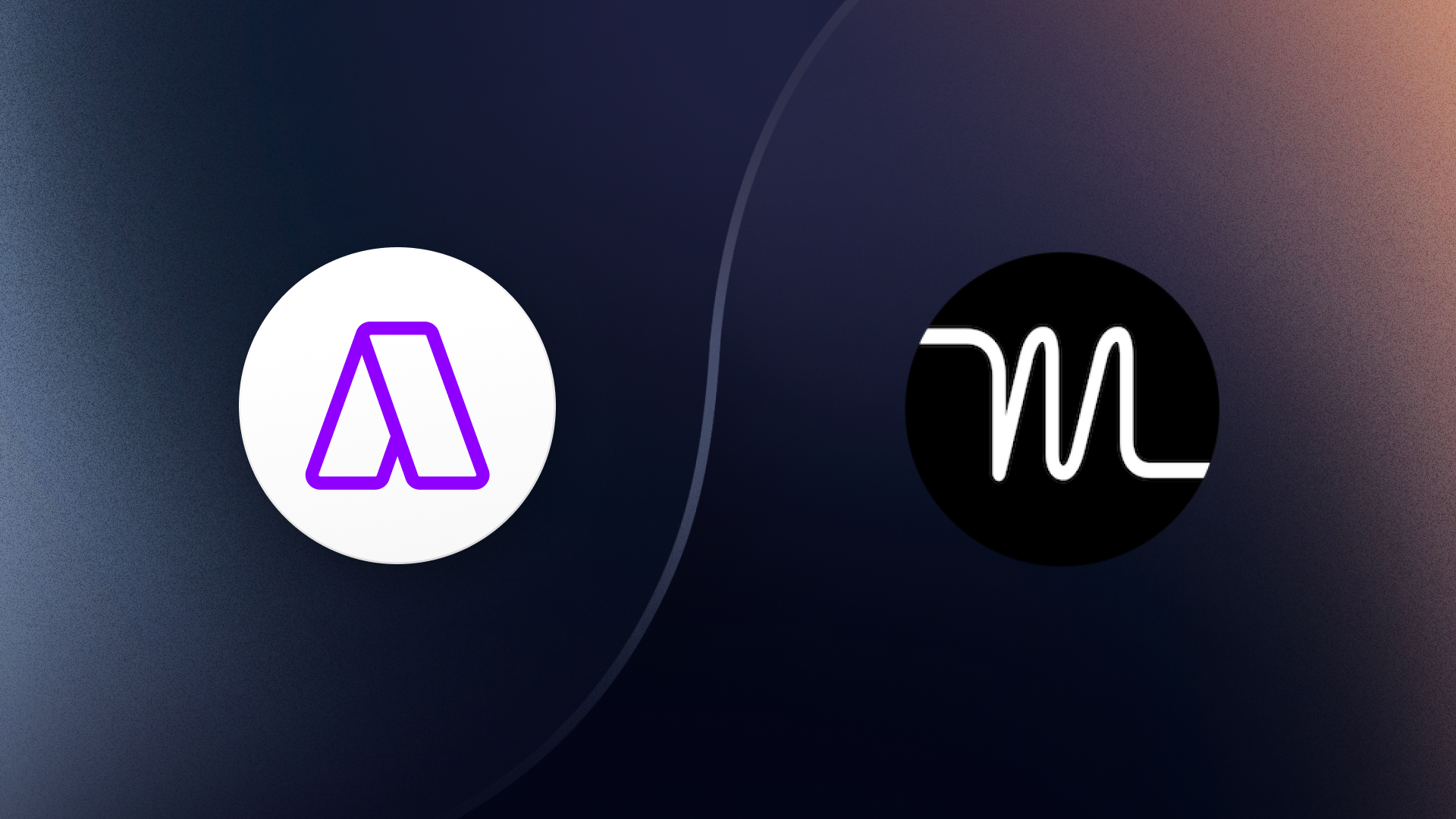
Akiflow vs. Motion has been a hot topic in my inbox for months, too hot to ignore, so I rolled up my sleeves to review both and figure out which tool helps you run your week better.
While Akiflow and Motion are popular choices for calendar-first planning, if you’re curious about something fresher, and built to keep you in control with AI assistance, you should give Morgen a look.
It’s the first planner to combine:
- Ideal-week templates (Frames) that protect deep work by default
- An AI Planner that generates a schedule you preview and approve (no random reshuffling of your schedule without your confirmation)
- Unified connectors for tasks + calendars, with buffers, travel time, and scheduling links baked in.
What power users say (3rd-party sentiment)
Before our take, here’s how users rate Akiflow, Motion, and Morgen (from G2, ToolFinder, and Trustpilot):
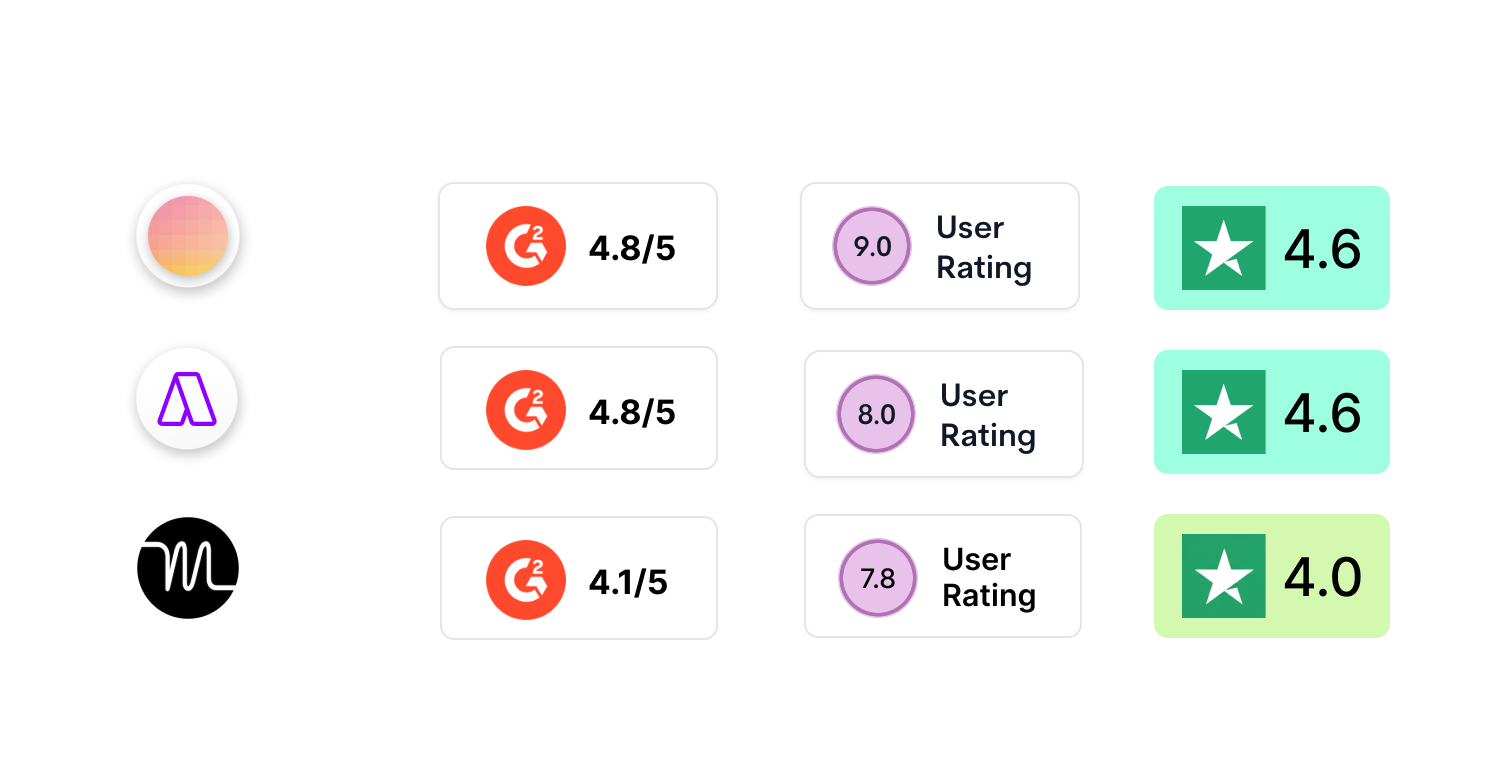
3 unique things you can do with Morgen
1) Protect your ideal week with Frames
Create morning deep-work blocks, afternoon admin, or routine rituals to let the AI Planner know the boundaries when proposing a day plan. You approve the final schedule.
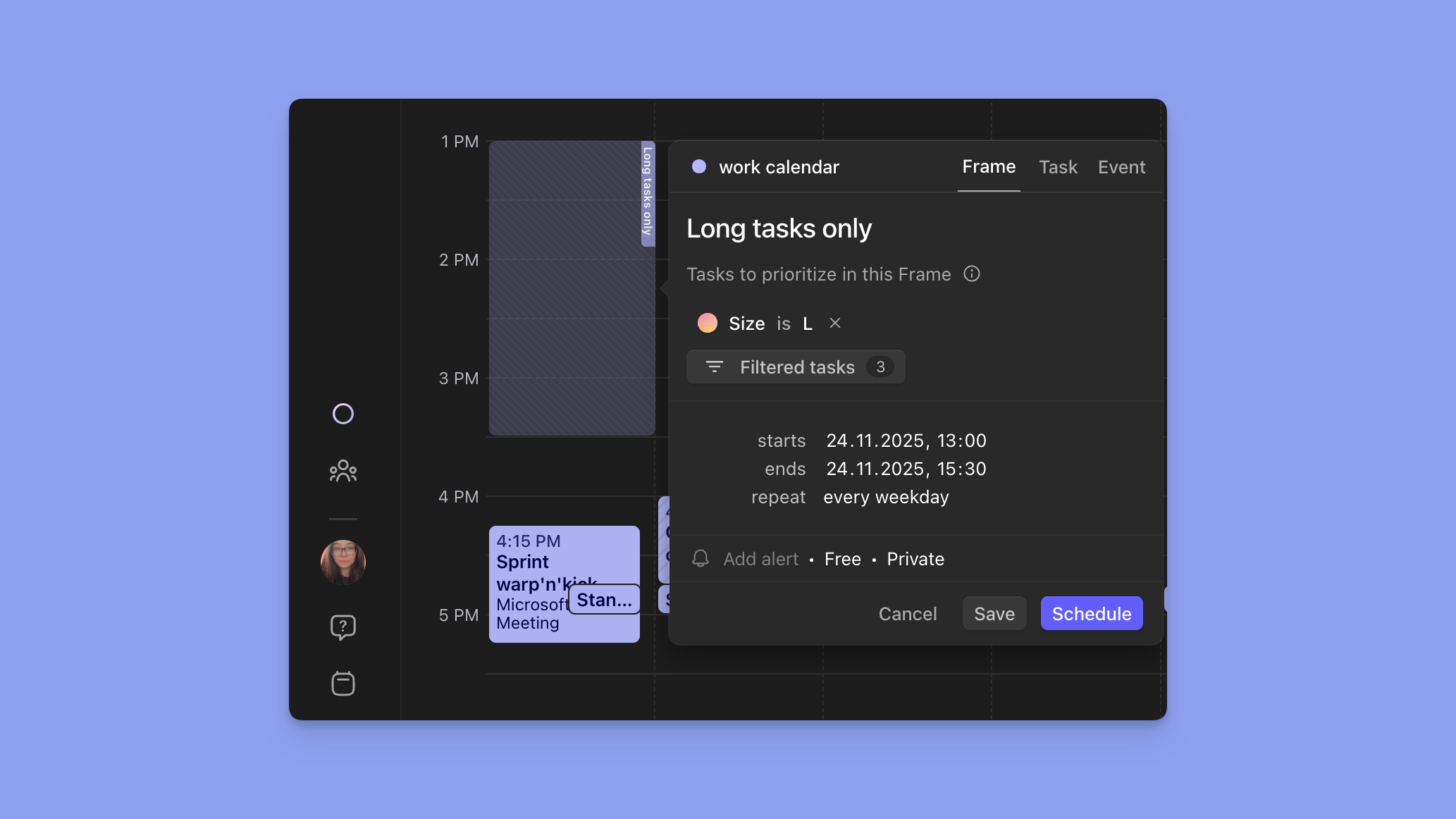
Why it matters vs Motion & Akiflow:
- Motion excels at reflowing work automatically, but that can feel opaque if you want certainty 100% of the time.
- Akiflow gives you surgical control, but manual re-planning on chaotic days is not always ideal.
- Morgen’s preview-first flow slots in the middle: faster than hand-dragging, calmer than fully hands-off.
2) Plan across tools without rebuilding your stack
Connect Notion, Linear, ClickUp, Obsidian, Todoist, Google, Outlook, iCloud, and more. Your tasks appear beside your calendars, drag them into time or ask AI to propose a plan, and approve before it lands on your calendar.
Why this is awesome:
- Users love Akiflow’s integrations because they kill double-entry. Morgen brings that same consolidation, then layers in Frames and an approve-first AI planning at scale.
3) Make meetings respect your focus
Scheduling links, Open Invites, buffers, and travel time are built-in. Morgen calculates and schedules time to travel to and from events, adds buffers, and keeps private details private with calendar propagation across accounts.
How it's better:
- Motion’s booking stack is strong, Morgen covers the essentials and adds planning niceties (buffers/travel/propagation) as a cherry on top.
How simplified planning looks in Morgen
1. Connect calendars + task apps (Notion, Linear, ClickUp, Todoist, Obsidian, etc.).
2. Create Frames for your ideal week (deep work, admin, routines).
3. Hit AI Planner → review the proposal → approve.
4. Share scheduling links or a one-time Open Invites, Morgen adds buffers and warns you about conflicts during the setup.
Fair note on bias (and where Morgen isn’t trying to compete)
Morgen is our product, so we can’t claim zero bias. To balance that, we lead with 3rd-party reviews for Motion and Akiflow, and we’re plain about trade-offs:
- Heavily team-orchestrated work (dependencies, capacity dashboards, risk alerts)? Motion goes deeper today as a task management suite.
- Manual precision with an inbox? Akiflow is fantastic, especially for power users.
If you want a middle path, AI assistance you approve, energy-aware planning, and strong connectors, Morgen’s a great fit.
Akiflow vs Motion: side-by-side comparison (start here)
I don’t want you wading through 2,000 words to decide. So, I boiled each tool down to its core behaviors and who will love/hate it.
What factors I considered in the review:
- Calendar and scheduling limits
- Task management
- AI features
- Meeting scheduling
- Collaboration and team planning
- Integrations
- Platforms, performance, UX
- Pricing, trials and discounts
Considerations are paired with user sentiment from G2 and Reddit to avoid tunnel vision.
What Akiflow and Motion promise:
Calendar & scheduling
Motion: AI calendar with auto-scheduling and auto-rebook
Motion’s calendar lets you schedule tasks and tries to keep you sane when new meetings and adhocs punche holes in it. How? You feed it durations, due dates, and priorities; it scans your availability, work hours, and replans on the fly.
Day to day planning with Motion’s AI calendar:
- Plan a week in minutes. Dump your backlog with durations and deadlines, Motion builds a first pass of your schedule so you start your Monday with a plan.
- Survive surprise meetings. Drop a call on top of a work block and Motion automatically reflows the day, pushing unfinished tasks to the next slot without drag and dropping.
- Deep work with rules. Create focus windows, meeting caps, buffers. Motion schedules around them so you get uninterrupted stretches without hand-holding it hour by hour.
- Share booking links. These obey your rules (hours, buffers, max meetings), so inbound requests slot cleanly instead of detonating your week.
- Live from one source of truth. Tasks, events, and priorities sit in the same place, so “what matters” changes into “what’s next on the calendar,” not a separate to-do list you’ll ignore.
User review disclaimer:
Some users say Motion’s AI feels impressive at first but can end up reshuffling tasks in ways that don’t feel discerning, even with priorities and time windows configured. This perspective is useful context if you’re sensitive to calendar changes you didn’t explicitly approve.
Who it’s for:
- Folks with volatile calendars who want the day to re-plan itself with roles heavy on meetings.
- Not ideal if your productivity comes from surgical control of exact hours. In that case, Akiflow’s manual time-blocking will feel calmer.
Akiflow: manual precision time blocking
Akiflow is built for exact-hour control. You pull tasks from all your apps into a unified view, then place them as time blocks on your calendar using natural language and its Command Bar or keyboard shortcuts. When the day shifts, you can drag blocks or use Akiflow’s “Replan Undone Tasks” to suggest the next available slots. It’s the control-first alternative to full automation.
Day-to-day planning with Akiflow’s calendar:
- Plan week with keyboard. Capture tasks from email/Slack/PM tools into one inbox, then block them on your calendar with the Command Bar (create tasks/events, navigate, schedule) and power shortcuts.
- Replan tasks. Tap Replan Undone Tasks to auto-suggest the next slot(s) in the same series/project, or just drag the block where you want it.
- Lock deep work blocks. Use @Time Slots/rituals so your focus windows stay intact.
- Share meeting links. Built-in Meeting Link lets invitees book one-off or recurring time without wrecking your plan.
- Live from one source of truth. Gmail/Outlook, Slack, Notion, Asana, ClickUp, Jira, GitHub, Trello, Todoist, Linear, Teams, Zoom, Zapier, or IFTTT. Akiflow pulls it together so you schedule everything from one surface. G2 user reviews repeatedly praise the universal inbox for killing double entry.
User review disclaimer:
G2 reviewers consistently highlight unified inbox + command bar speed and even mention helpful onboarding calls during the trial. At the same time, Akiflow’s value is framed around you placing blocks (i.e., less “auto” than Motion), which some power users see as a feature and others see as extra work.
Who it’s for:
- People who want surgical control over which hour work happens and love keyboard workflows.
- Anyone living across many apps who wants to plan from a single inbox and avoid double entry.
- If you prefer the day to re-plan itself, Motion’s auto-reschedule fits better.
Task management (capture → plan-> schedule)
Motion tasks in-suite
Motion works best when your tasks, projects, notes, and calendar all live inside its workspace. You add tasks with duration/priority/due date and the scheduling engine picks them up.
Day-to-day with Motion tasks
- Plan tasks automatically. Add tasks or convert meeting notes/decisions to tasks for Motion to schedule them for you.
- Set priorities. Urgent items move up into earlier blocks and lower-priority work gets pushed back.
- Project-aware planning. Tasks tied to projects inherit context (dependencies, owners) that informs the scheduling.
User review disclaimer:
Some users love the “all-in-one” feel, while others say Motion only sings when you commit to its suite. If most tasks come from Jira/Notion/etc., you’ll feel friction.
Who it’s for:
- Teams/ICs who want scheduling to just happen and are happy to centralize inside Motion.
Akiflow: unified inbox + command bar
Akiflow hoovers tasks from Gmail/Outlook, Slack, Notion, Asana, ClickUp, Jira, GitHub, Trello, Todoist, Linear, Teams, Zoom, Zapier, and more into a single view you triage and time-block.
Day-to-day with Akiflow tasks
- Everything in one inbox. Emails, DMs, PM tasks land in one place.
- Command Bar flow. Create/schedule tasks, jump to calendars, and assign durations with your keyboard.
- Replan helpers. If a block slips, “Replan Undone Tasks” suggests next-best slots. You can still drag-drop if that’s what you prefer.
User review disclaimer:
Reviewers highlight the universal inbox + speed. Some note that if your week implodes often, manual re-planning can feel like a tax.
Who it’s for:
- Power users living in many apps without migrating tool stacks.
AI features (daily leverage vs. team orchestration)
Motion: broad, workspace-aware assistants
AI Chat, AI Docs/Notes/Sheets, AI meeting notetaker, plus the task/calendar engine combine to capture decisions, create tasks with deadlines, and auto-schedule them. Motion also lets you create and manage AI Employees. These are specialized, agent-style workers that live inside Motion’s workspace (Projects, Tasks, Calendar, Docs/Notes, Sheets). They’re designed to plan, coordinate, and execute multi-step workflows with a human-in-the-loop review layer.
Day to day with Motion AI for planning:
- Turn meetings into action. Notes → tasks → calendar blocks.
- Ask across your workspace. Summaries, rollups, status asks with links back.
- Auto-reflow with context. When scope or deadlines change, AI-backed scheduling adapts.
Day to day with Motion AI employees:
- Spin up role-specific agents (e.g., an SDR) that generate outreach artifacts and follow your playbooks. Motion also offers custom-built AI Employees tuned to your business.
- Have agents act across Motion’s suite: create tasks/projects, update timelines, summarize docs/notes, and coordinate next steps. This happens in the same place where humans plan work.
- Keep you in control: you can review, approve, or edit agent output before it lands in plans or calendars.
User review disclaimer:
Some users say Motion’s AI is powerful but can “shuffle” tasks in ways that feel unclear unless you invest in rules and guardrails. Community threads suggest AI Employees are rolling out in waves. Some users saw them appear after updating billing/plan settings, others are still waiting for the in-app banner or email invite.
Who it’s for:
- Managers/ICs who want end-to-end automation and are comfortable letting AI commit changes.
Akiflow: personal AI for control-first workflows
Akiflow’s AI - Aki helps create events, coordinate meetings, nudge workload, and trigger AI Workflows (prompt → triggers/actions/conditions) to automate reminders and capacity nudges.
Day-to-day with Akiflow AI
- Ask Aki to schedule or adjust. Aki requires permissions to make changes.
- Automate nudges. Set capacity alerts or reminder flows with prompts.
- Stay manual when you want. You can skip Aki if you want.
User review disclaimer:
Users like the “assist, don’t override” approach, while critics wish for deeper auto-reschedule.
Who it’s for:
- ICs who want lightweight AI suggestions without surrendering control.
Meeting scheduling (links, combined calendars, rules)
Motion: full-stack scheduler
Motion offers booking pages with rules, dynamic availability across multiple calendars, auto-insert video links, and safeguard settings (buffers, caps).
Day-to-day with Motion scheduling
- Share a link, stay sane. Bookings respect focus windows and caps.
- No double-book. Combined calendars prevent clashes.
- Cleaner handoffs. Meeting prep/notes live next to the event.
User review disclaimer:
There are no reviews pointing out any downsides of Motion’s meeting links.
Who it’s for:
- Roles with lots of inbound scheduling who want guardrailed booking.
Akiflow: essentials covered inside the planner
Hook into Google/Outlook and Zoom, create events from the calendar, invite guests, keep your plan coherent using “planner with scheduling” rather than a dedicated scheduler.
Day-to-day with Akiflow scheduling
- Quick event creation. From the same surface you plan tasks.
- Stay coherent. Your time blocks and meetings live side-by-side.
- Lightweight AI. Use Aki for schedule capacity reminders.
User review disclaimer:
No reviews talk about Akiflow’s lack of depth with the Meeting scheduling feature.
Who it’s for:
- People who want basic scheduling inside their planner and minimal overhead.
Collaboration & team planning (dependencies, workload, risk)
Motion: built for teams
Dependencies, workload balancing, risk views, plus AI Docs/Notes and auto-scheduling that keeps timelines realistic.
Day-to-day with Motion collaboration
- See risk early. Conflicts surface quickly.
- Balance workloads. Reassign/auto-reflow to keep delivery dates intact.
- One workspace, less status drift. Docs/notes/tasks stay linked.
User review disclaimer:
There are no reviews from Managers pointing out lack of collaboration planning.
Who it’s for:
- Teams who need capacity and dependency clarity without spreadsheets.
Akiflow: planning lense
Akiflow isn’t a PM suite. it’s a planning surface on top of Jira/Asana/ClickUp/Linear. Share availability, coordinate personally, and keep execution in your PM.
Day-to-day with Akiflow collaboration
- Pull your assigned work from PM tools to your inbox.
- Time-block your deliverables without duplicating tasks.
- Communicate availability while keeping PM as the source of truth.
User review disclaimer:
ICs love that it fits into existing PM stacks. Managers wanting global workload views need another system.
Who it’s for:
- Teams that already standardized on PM tools but want personal planning sanity.
Integrations
Motion: cohesion via its own stack
You get the smoothest experience when you run projects/docs/calendar/notes inside Motion. External integrations exist, but the design pushes you to manage tasks in-suite.
Day-to-day with Motion integrations
- Fewer moving parts if you migrate.
- Simpler model: one workspace to rule them all.
User review disclaimer:
Fans like the “one roof” model; others prefer best-of-breed and feel limited.
Who it’s for:
- Teams that value cohesion over heterogeneity.
Akiflow: integrations are the point
Akiflow has a wide range of integrations including Gmail/Outlook, Slack, Notion, Asana, ClickUp, Trello, Todoist, Jira, GitHub, Linear, Teams, Zoom, Zapier, and more.
Day-to-day with Akiflow integrations
- Centralize scattered work. See everything in one inbox.
- Schedule/triage without app-hopping.
- Keep sources of truth in PM/email/chat.
User review disclaimer:
Most praise the breadth of integrations. A minority flags setup/integration snags on certain platforms (esp. iOS) before things stabilize.
Who it’s for:
- People who live across many tools and want one planning cockpit.
Platforms, performance & UX (desktop, iOS/mobile, keyboard)
Motion: auto-reflow
Motion’s desktop/web experience shines once you lean into auto-reflow. You spend more time tweaking rules than dragging blocks. Mobile has improved noticeably this year (Reddit community reports), and App Store reviews echo that the phone app reliably shifts tasks as the day changes. You’ll still find threads about performance rough edges, but the overall trajectory is up.
Day-to-day with Motion
- Desktop: Add tasks, set priorities/durations, and let the AI agenda re-plan with minimal manual shuffling.
- Mobile: Quick check-ins and on-the-go adds. Users note task blocks auto-shift around surprises. Some threads still flag lag or missing niceties (e.g., dark mode requests).
User review disclaimer:
- If you want a hands-off planner on desktop and a good-enough mobile companion that’s improving.
Who it’s for:
- People who want hands-off scheduling and don’t mind the lack of dark mode.
Akiflow: desktop-first
Akiflow’s superpower is desktop speed. Thanks to the Command Bar and keyboard shortcuts you can capture, triage, and time-block without touching the mouse. Users consistently praise the unified inbox + Command Bar combo. On mobile, experiences are mixed: some praise iOS widgets & quick capture, while others report sync glitches or beta-access friction.
Day-to-day UX (Akiflow)
- Desktop: Fly through inbox → plan by keyboard. Jump, tag, set durations, and drop exact blocks fast.
- Mobile: Great for quick capture, but community threads mention sync oddities (desktop↔︎mobile time slots) and occasional instability.
User review disclaimer:
Akiflow’s mobile is useful but inconsistent. It’s great when it works, but community threads flag sync/beta snags you should be aware of.
Who it’s for:
- If you value precision + keyboard speed on desktop and can tolerate a mobile app that’s still maturing.
Pricing, trials & discounts
Motion pricing, free trial and discounts
- Tier plans: Motion’s public pricing page shows the current AI Workplace plan starting at $29/month (annual, 1 seat, 1,000 credits) with AI Chat, AI Projects/Tasks, AI Calendar/Meetings, Docs/Notes, Sheets/Databases, and Dashboards included.
- Trial & promos: Motion advertises a 7-day free trial across storefronts. You’ll also see this surfaced on partner listings.
- Third-party pricing snapshots: G2’s pricing card (Oct 2025) notes a 7-day trial and mentions up to 33% annual savings and a student/non-profit discount.
What users found valuable:
- Fewer manual reshuffles thanks to auto-rescheduling and auto-rebook. G2 users frequently call out “recalculates the plan in seconds.”.
Akiflow pricing, free trial and discounts
- Plans: Akiflow’s pricing page positions the product with an ROI calculator and cites $19/month on the annual plan (marketing example).
- Trial & discounts: 7-day free trial is standard. Akiflow confirms student/academic discounts via support.
- Marketplace snapshots: Some third-party explainers list typical monthly vs. annual ranges. Treat these as indicative only and verify in-app.
What users found valuable:
- Unified inbox + Command Bar to plan with fewer context switches. G2 reviews mention the onboarding call during the trial as an accelerator.
Quick note: Pricing changes. For final publication, double-check in-app: Motion’s pricing page for plan names/credits/features, Akiflow’s pricing for current monthly/annual amounts and any discount programs.
Akiflow vs Motion pros & cons
What users say
While every tool has it’s pros and cons, a number of Motion users are largely frustrated with Motion’s new tiered pricing. They describe it as nickel-and-diming, confusing to navigate, and a trust breaker.
Several say they’ve canceled or won’t return, calling AI Employees gimmicky or immature. A few still acknowledge Motion’s auto-scheduling is best-in-class, but many are actively testing or migrating to Reclaim, Sunsama, Morgen, or ClickUp (with caveats: Reclaim lacks robust projects, ClickUp’s “auto-schedule” isn’t truly automatic, SkedPal works offline but gates auto-scheduling behind paid tiers).
Overall vibe: strong pricing backlash, skepticism toward the AI push, and a drift toward simpler or cheaper alternatives unless Motion’s value becomes clearer.
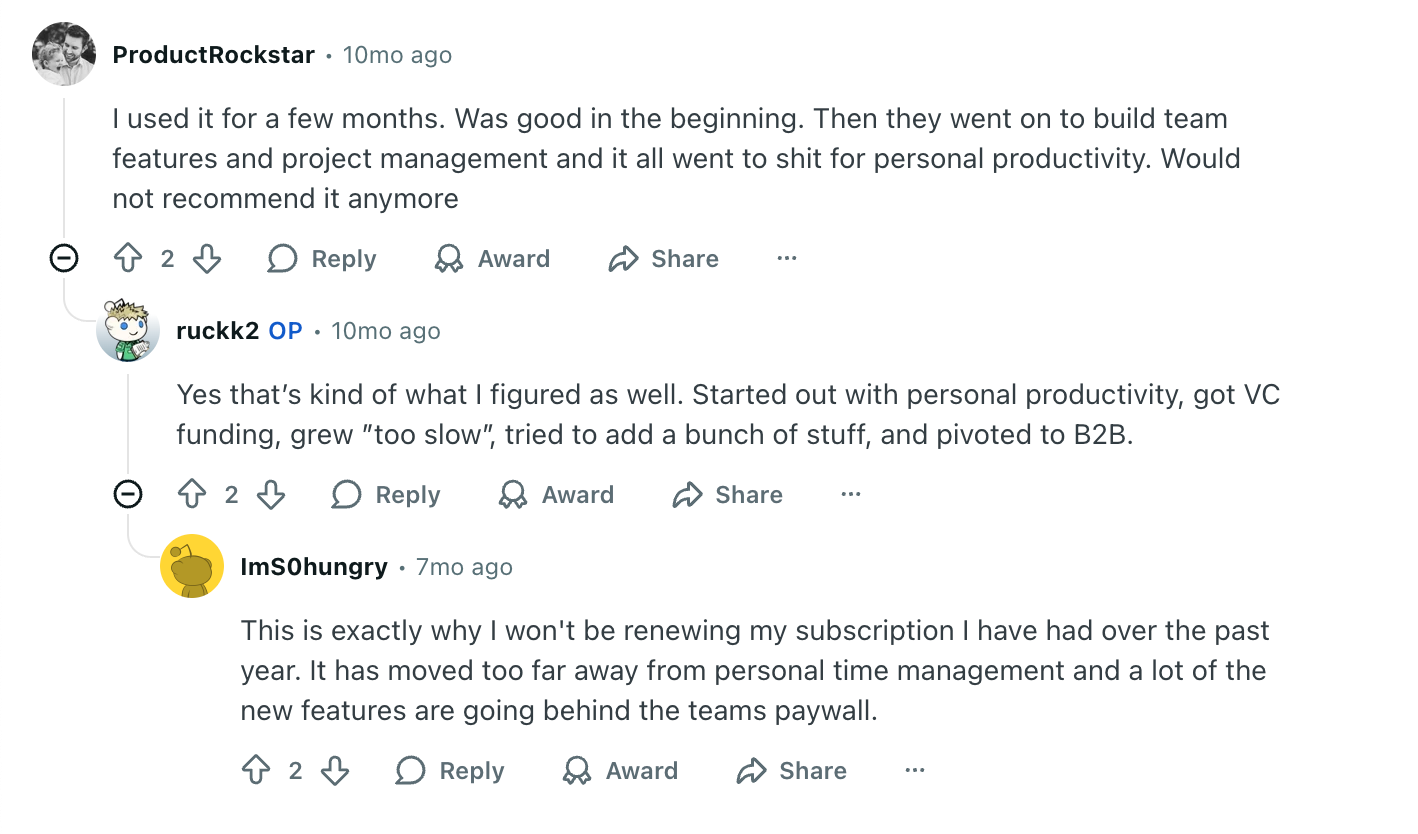
Akiflow, on the other hand, has recent users frustrated and fatigued: describing long stretches with no support response, immature AI (can’t answer basic queries, no true recurring events, no conflict checks), and buggy time slots/recurring behavior that create duplicates and “floating” tasks. Several commenters echo slow or unhelpful support, refund/cancellation friction, and annoyances like an unskippable tutorial. A few say they once liked Akiflow and still see potential, but the consensus in the thread leans toward “launched before ready,” with some readers reconsidering sign-up or moving on unless reliability and support improve.
Final word
There’s no universal winner here, only the best fit under pressure.
If your week is a moving target and you’re willing to let software re-plan your day, Motion’s automation (auto-schedule, auto-rebook, team context) will save you some time.
If your edge comes from surgical control, exact hours, clear boundaries, and keyboard flow Akiflow’s unified inbox + Command Bar will keep your plan predictable and your hands on the wheel.
And if you still haven’t decided but want a middle path, an AI leverage you approve plus an ideal-week spine that protects deep work, Morgen is the best alternative: propose → review → schedule, with buffers, travel time, and broad connectors so your plan respects reality without running away from you.
